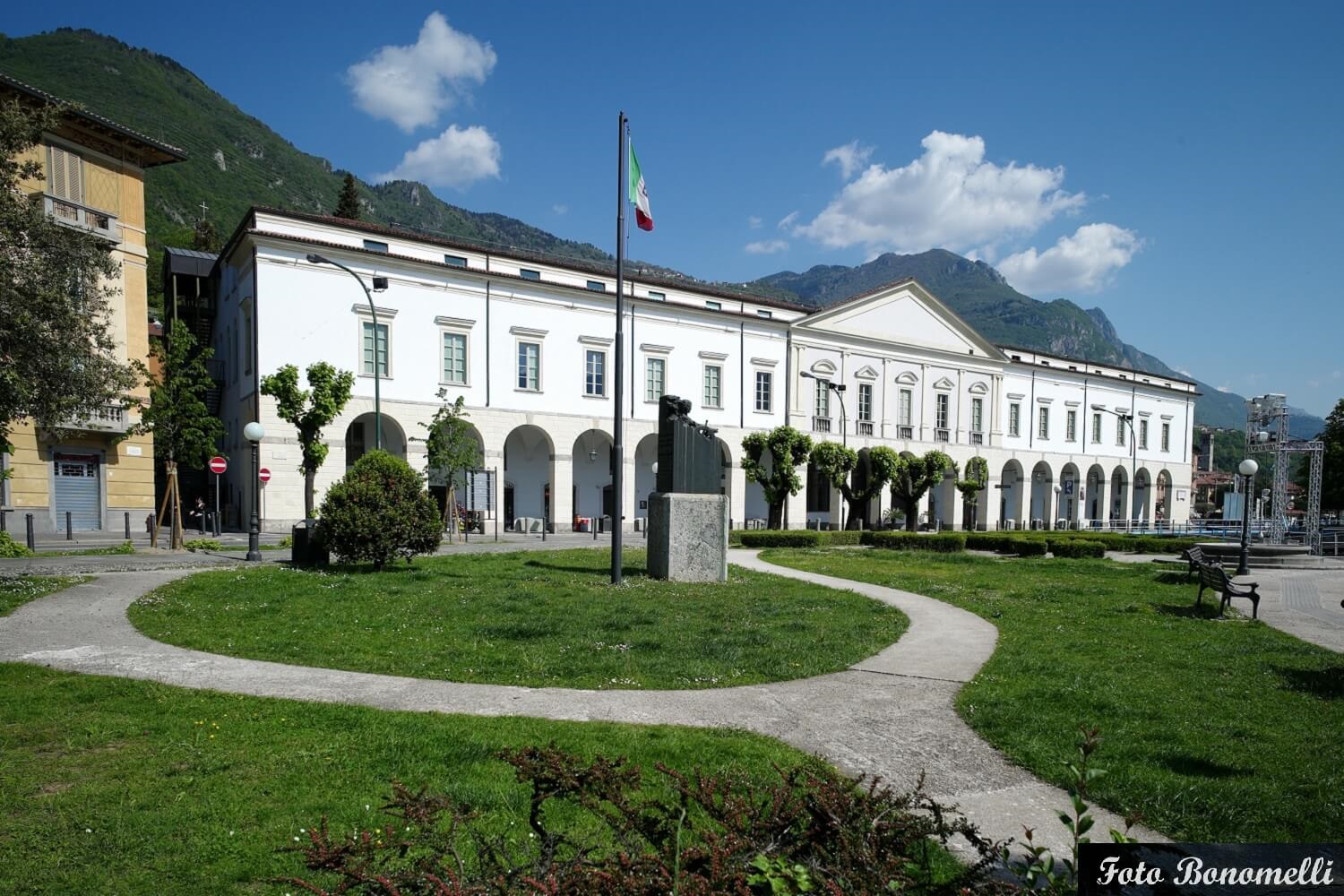
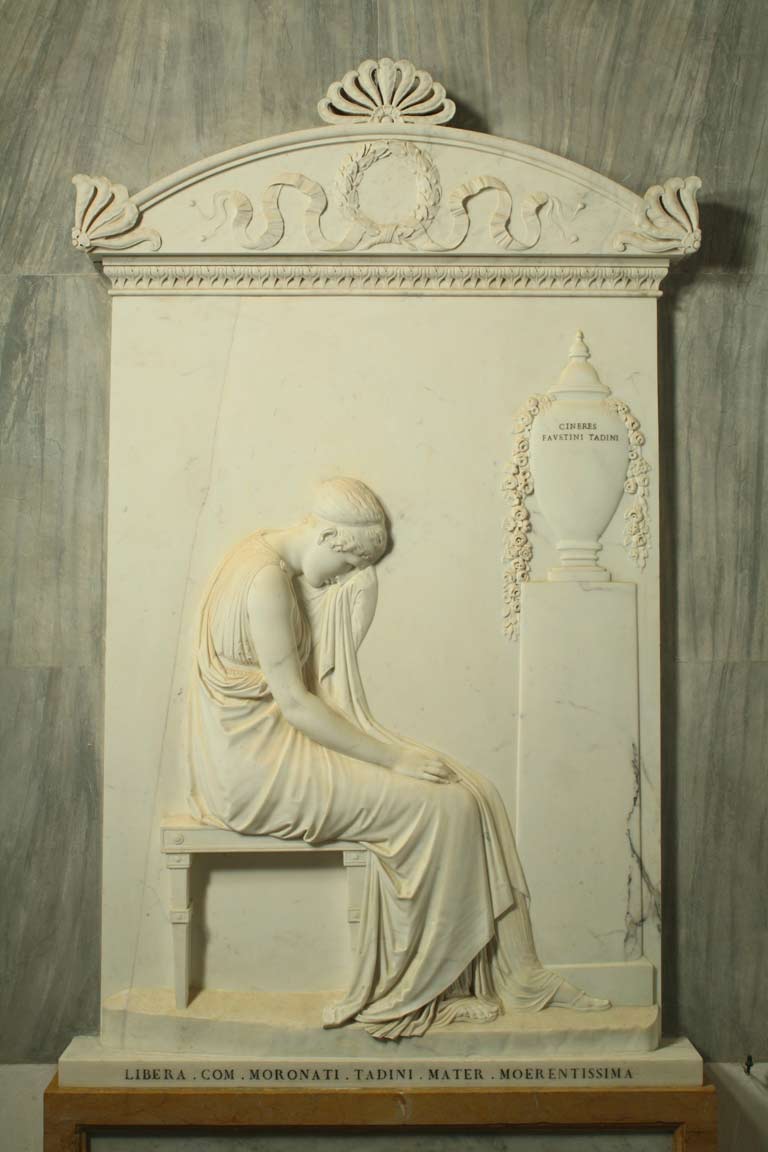
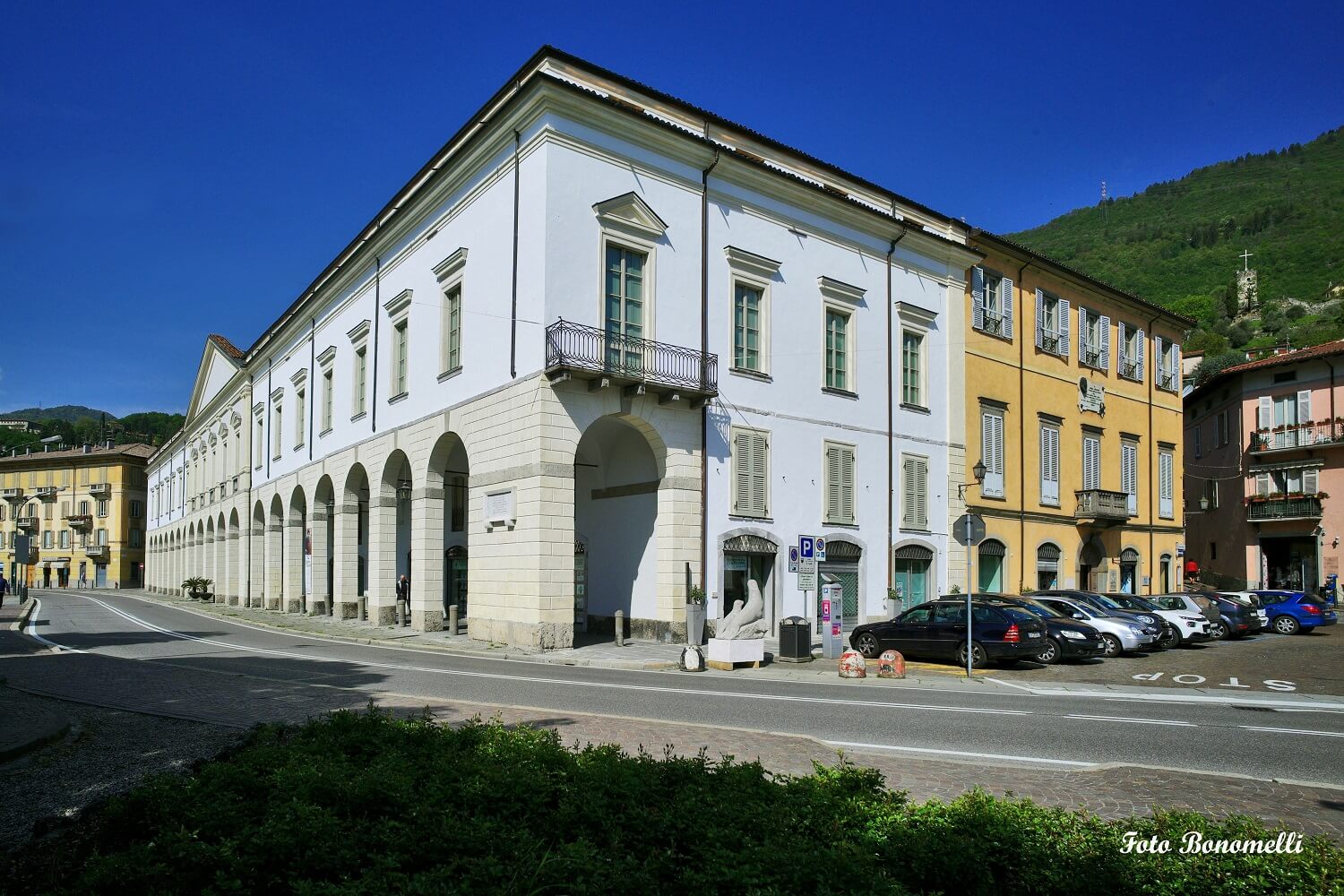
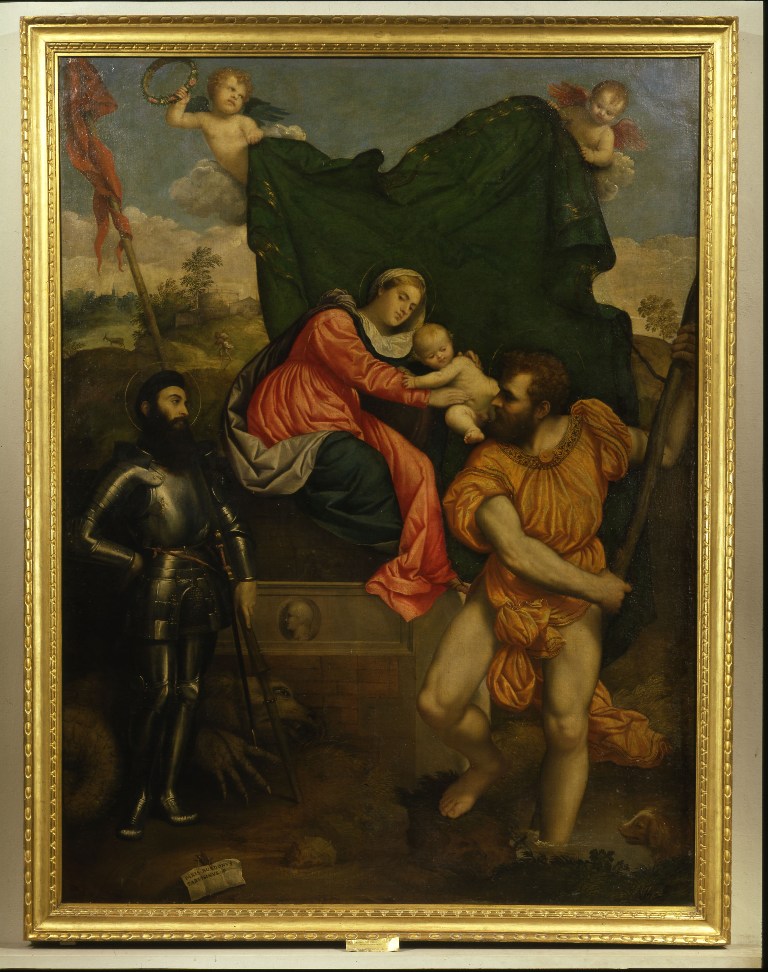
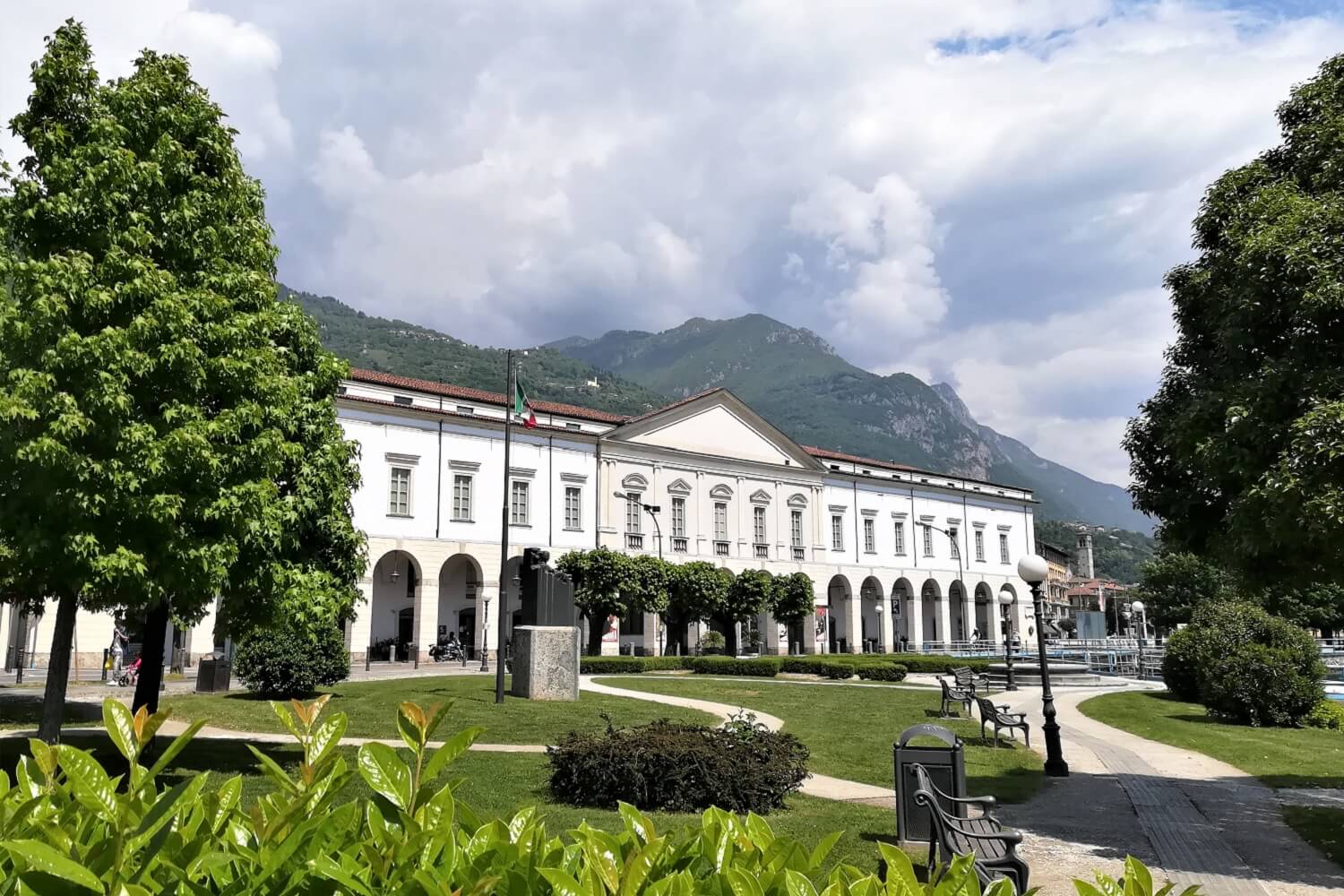
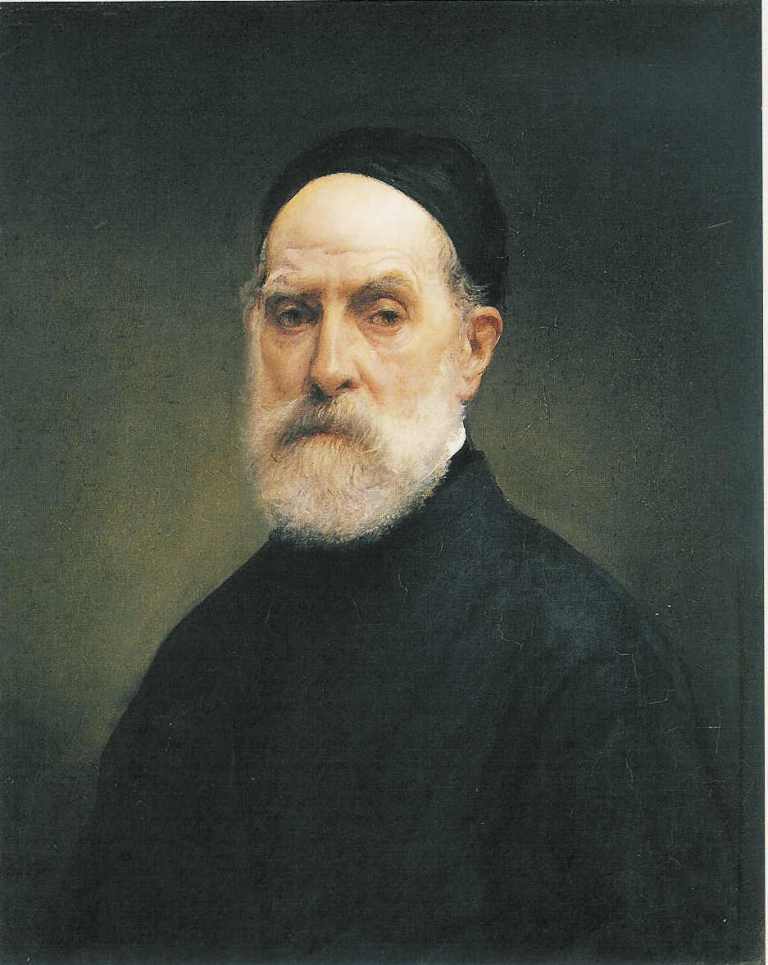
Tadini Academy of Fine Arts Gallery
It was Count Luigi Tadini’s (1745-1829) decision to create a foundation that included schools of music and drawing – still active – and to construct a building on the shores of the lake to exhibit his art collections, put together between the end of the 18th Century and beginning of the 19th Century. Visiting Tadini Academy Gallery enables the public to experience a 19th Century collection, in a constant mix between art and life.
This building was constructed next to an old aristocratic home looking onto today’s Garibaldi square, along the new road that linked Bergamo and Lovere. Works started in 1821 with the construction of the chapel, followed by the building and were completed by 1827. The Gallery opened to the public the following year. The ceilings and walls were adorned by the theatre set designer Luigi Dell’Era who was entrusted to create a setting worthy of the collection.
Visits start from the chapel in the centre of the garden, built to house the Stele Tadini, one of the last works by Antonio Canova, sculpted between 1819 and 1821 to honour the memory of Faustino, the count’s son who died prematurely in 1799. The sculptor and young count Tadini met in Rome in 1795. Tadini celebrated the sculptor’s works in a volume published in 1796 and Canova gifted him, as a sign of his gratitude, the Religione, a terracotta sketch, intended for the monument dedicated to Clemente XIII, still in the Gallery today. Years later, Faustino’s passing was remembered with a solemn marble sculpture, the Stele, transforming the tragic episode into a delicate elegy.
The art collection is displayed on the main floor of the building. Following the spectacular Arms and Armor Gallery, the Chamber of Antiquities houses the count’s archaeological collection acquired in Naples during the last decade of the 18th Century. Rooms XXI and XXII are devoted to a precious porcelain collection from the East (Chinese and Japanese) and West (Meissen, Naples, Venice, Paris and Sèvres). The Library, with over 4600 volumes, showing the varied interests of a nobleman in the 17th Century and a panoramic balcony overlooking the lake complete the tour.
The large Hall, in the centre of the museum, designed for concerts and plays, has hosted a prestigious musical season with performers from throughout Europe since 1927.
The rooms that follow are devoted to paintings. Luigi Tadini acquired paintings from Crema during the period of suppression of ecclesiastical institutions so that the Tadini Museum would in some way document the city’s history. Thus the collection contains altarpieces by Paris Bordon (Manfron altarpiece), Vincenzo Civerchio and Aurelio Gatti. The count became interested in Venetian paintings around 1810, acquiring masterpieces such as the 14th Century Madonna and Child by Jacobello di Bonomo, the Madonna and Child by Iacopo Bellini, the Madonna and Child and Saints by Palma il Giovane and the Dead Christ by Piero della Vecchia. These are joined by 15th and 16th Century paintings from the school of Verona such as the Madonna and Child by Francesco Benaglio, Saints Francis and William by Domenico Brusasorci, the Escape to Egypt by Felice Brusasorci and significant testimonies of 17th Century Lombard culture such as the two paintings by Carlo Francesco Nuvolone.
The second floor houses the 19th Century Museum, resulting from Giovanni Battista Zitti donating his collection of mementos from the period of Italian unification, subsequently enriched by other families from Lovere. The Lovere people’s involvement in the Unification of Italy (three members of the Expedition of the Thousand originated from Lovere) and close link between social and cultural events makes the works on display a significant document of the history of the territory. The selection of 19th Century portraits and the three masterpieces donated by Francesco Hayez to his grandchildren Enrico and Carlotta Martinolli Banzolini are of particular importance, including the extraordinary Ecce Homo, one of the artist’s last works.
A collection of modern and contemporary art completes the tour, including works documenting Italian and European artistic culture from the post Second World War period up until recent years.
Marco Albertario
For further information:
SCALZI G. A, Guida alla Galleria Tadini, 2 volumi, Lovere 1992.
ALBERTARIO M., “Darò notizie della mia Galleria”. Le raccolte del conte Luigi Tadini, in Musei nell’Ottocento. Alle origini delle collezioni pubbliche lombarde, atti del convegno (Milano, 7-8 ottobre 2010), a cura di M. Fratelli, F. Valli, Torino 2021, pp. 34-45.













